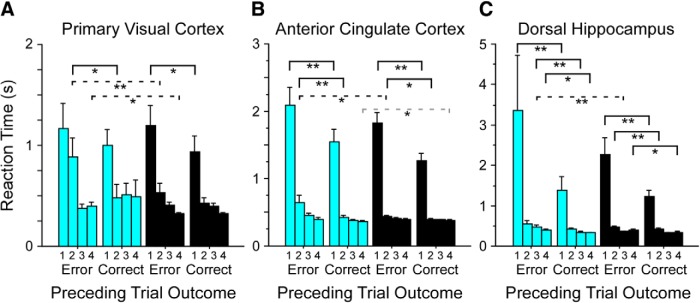Figure 8.
Suppression increases RT following errors. Errors during training were signaled by an increase in screen luminance that persisted for 1 s. RT on correct responses was longer following errors than following correct responses. Suppression further lengthened RTs following errors but had no effect on RT following correct responses. These patterns were observed for mice from each suppression group, with performance on suppressed trials indicated by blue bars, and non-suppressed trials by black bars. A, In V1, suppression lengthened RTs following errors during stages 2 and 4 (dashed black lines; Wilcoxon, z = –2.7, p = 0.006 and z = –2.4, p = 0.01, respectively). B, In ACC, suppression produced longer RTs during stage 2 (dashed black line; Wilcoxon, z = –2.3, p = 0.02). C, In dHC, suppression following an error produced longer RTs during stage 3 (dashed black line; Wilcoxon, z = –2.8, p = 0.004). Dashed gray line: increased RT on non-suppressed trials. Solid black line: increased RT following error versus correct trials, within either suppressed or non-suppressed conditions; *p < 0.05, *p < 0.01.

